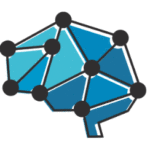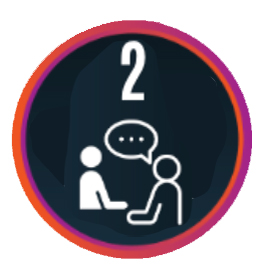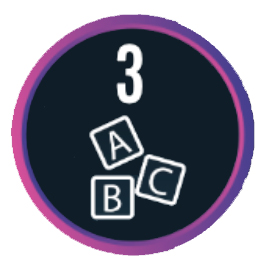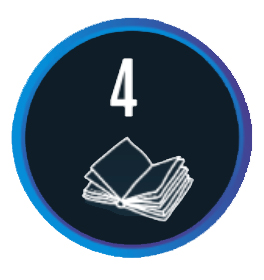Evidence-Based Early Literacy Resources
These resources were gathered as part of MA DESE’s commitment to advancing evidence-based, culturally and linguistically sustaining early literacy practices across the state. The Reading Circuit and EdLighten Solutions have developed these resources to assist faculty, particularly those that teach candidates for the Early Education PreK-2, Elementary Education and Moderate Disabilities licenses, in aligning their programs to the Early Literacy Program Approval Criteria. Please do not hesitate to contact us if you have any questions.
THE READING CIRCUIT, INC.

This resource repository is not a definitive or prescribed list of texts, documents, videos, webinars and websites. It is a guide for faculty as they align their programs with evidence-based, culturally and linguistically sustaining practices. This resource will be updated to reflect new publications, implementation guides, technical assistance and research.
Organization of Resources:
Section I presents resources of an overarching nature (definitions, professional organizations and conferences, journals, etc).
Section II presents resources aligned with the five course content sections of the Early Literacy Program Approval Criteria (ELPAC).
NOTE: This list of resources was generated by the Professional Learning Community independent of the Massachusetts Department of Elementary and Secondary Education. An asterisk (*) notes which resources on this list are also referenced in DESE’s Mass Literacy Guide.

1 - Core Principles of Intentional and Equitable Literacy Instruction
- Research on development of skilled reading and writing
- Development of language and literacy for multilingual learners
- Instructional materials
- Engaging instruction
- Assessments and data-based decision making
2 - Language Comprehension
- Research on the development of language comprehension
- Vocabulary
3 - Foundational Skills
- Research on the development of skilled word reading
- Phonological awareness instruction
- Phonics and decoding instruction
- Encoding instruction
- Fluency
4 - Reading Comprehension
Research on the development of reading comprehension
The role of knowledge building
The role of language and literacy knowledge
The role of culturally and linguistically sustaining complex texts
Instructional strategies for reading comprehension
5 - Writing
- Research on the development of writing skills
- Handwriting
- Sentence structure and writing conventions
- Writing craft
- Writing process
Section I - Overarching Resources
Evidence-Based Literacy Practices
- National Center for Improving Literacy (NCIL) – It provides resources, research, and implementation toolkits to support educators, policymakers, and other stakeholders in improving literacy outcomes.
- NCIL Selected Resources prepared for MA Educator Preparation Program
- Infographic on What SoR is and is not from the National Center for Improving Literacy (NCIL)
- Q&A with Ester de Jong on the Bilingual and Biliteracy Dimensions of the Science of Reading
- Science of Reading: Defining Guide from The Reading League
Conferences to Support the Teaching of Evidence-Based Early Literacy
- AIM Institute for Learning and Research
- International Dyslexia Association (IDA)
- Learning Disabilities Association of America (LDA)
- Multi State Association for Bilingual Education(MABE)
- Massachusetts Association of Teachers of Speakers of Other Languages (MATSOL)
- National Association for Multicultural Education (NAME)
- National Association of School Psychologists (NASP)
- National Council of Teachers of English (NCTE)
- Pennsylvania Training and Technical Assistance Network (PaTTAN)
- Plain Talk About Literacy and Learning
- The Reading League (TRL)
Practice Guides from the Institute of Educational Sciences (IES) What Works Clearinghouse
- * Foundational Skills to Support Reading for Understanding in Kindergarten Through 3rd Grade
- * Assisting Students Struggling with Reading: Response to Intervention (RtI) and Multi-Tier Intervention in the Primary Grades
- * Improving Reading Comprehension in Kindergarten Through 3rd Grade
- * Teaching Elementary School Students to Be Effective Writers
- * Using Student Achievement Data to Support Instructional Decision Making
- * Teaching Academic Content and Literacy to English Learners in Elementary and Middle School
- * Effective Literacy and English Language Instruction for English Learners in the Elementary Grades
Journals
- Intervention in School and Clinic
- Journal of Educational Psychology
- Journal of Learning Disabilities
- Journal of School Psychology
- Reading Research Quarterly
- Scientific Studies of Reading
- Teaching Exceptional Children
- The Reading League Journal
- The Reading Teacher
- Young Exceptional Children
Educator Preparation Articles
- Solari, E. J., Hayes, L., Demchak, A., & Wilburn, K. E. (2023). Aligning Special Education Teacher Training With Reading Science: Challenges and Recommendations. Intervention in School and Clinic, 59(1), 48-58.
- Petscher, Y. Cabell,S.Q., Catts,H.W., et al. “How the Science of Reading Informs 21st-Century Education.” Reading Research Quarterly 55, no. S1 (2020): S267–82.
Faculty Resources
- STARS-HE at the Center for Reading Science at Mount St. Joseph University supports Higher Education faculty in evaluating and enhancing the alignment of educator preparation with reading research
- The Reading League’s Compass resource for Educator Preparation Programs, including model syllabi from Educator Preparation Programs
MA DESE Documents
Section II - Resources Aligned with the ELPAC Content Sections

Core Principles of Intentional and Equitable Literacy Instruction
In addition to the resources listed in Appendix F of the ELPAC related to Intentional and Equitable Literacy Instruction, the following resources are presented.
Articles
- Al Otaiba, S., McMaster, K., Wanzek,J. & and Zaru, M.W. “What We Know and Need to Know about Literacy Interventions for Elementary Students with Reading Difficulties and Disabilities, Including Dyslexia.” Reading Research Quarterly 58, no. 2 (2023): 313–32.
- Al Otaiba, S. &, Petscher, Y. “Identifying and Serving Students With Learning Disabilities, Including Dyslexia, in the Context of Multitiered Supports and Response to Intervention.” Journal of Learning Disabilities 53, no. 5 (September 1, 2020): 327–31. Cárdenas-Hagan, Elsa. “Cross-Language Connections for English Learners’ Literacy Development.” Intervention in School and Clinic 54, no. 1 (September 1, 2018): 14–21.
- * Buckingham, D. J., & Castles, A. (2019). Learning to read and explicit teaching. Teacher Magazine.
- * Castles, A., Rastle, K., & Nation, K. (2018). Ending the reading wars: Reading acquisition from novice to expert. Psychological science in the public interest, 19, 5–51.
- * Denton, C. A. (2012). Response to intervention for reading difficulties in the primary grades: some answers and lingering questions. Journal of learning disabilities. 45(3), 232–243.
- * Fuchs, D., Fuchs, L. S., & Compton, D. L. (2012). Smart RTI: A next-generation approach to multilevel prevention. Exceptional children, 78(3), 263–279.
- Konrad, Moira, Caitlin J. Criss, and Alana Oif Telesman. “Fads or Facts? Sifting Through the Evidence to Find What Really Works.” Intervention in School and Clinic 54, no. 5 (May 1, 2019): 272–79.
- Malik-Moraleda, Saima, Dima Ayyash, Jeanne Gallée, Josef Affourtit, Malte Hoffmann, Zachary Mineroff, Olessia Jouravlev, and Evelina Fedorenko. “An Investigation across 45 Languages and 12 Language Families Reveals a Universal Language Network.” Nature Neuroscience 25, no. 8 (August 2022): 1014–19.
- * Moats, L. C. (2020). Teaching reading is rocket science: What expert teachers of reading should know and be able to do. American Federation of Teachers.
- Shanahan, Timothy. “A Review of the Evidence on Tier 1 Instruction for Readers With Dyslexia.” Reading Research Quarterly 58, no. 2 (2023): 268–84.
- Stanovich, K. E. (1986). Matthew Effects in Reading: Some Consequences of Individual Differences in the Acquisition of Literacy. Reading Research Quarterly, 21(4), 360–407.
- Theobald, Roddy J., Dan D. Goldhaber, Kristian L. Holden, and Marcy L. Stein. “Special Education Teacher Preparation, Literacy Instructional Alignment, and Reading Achievement for Students With High-Incidence Disabilities.” Exceptional Children 88, no. 4 (July 1, 2022): 381–400.
- Toste, Jessica R., Marissa J. Filderman, and Christine A. Espin. “Data Teams in Teacher Preparation: Improving Data-Based Instruction in Reading.” Intervention in School and Clinic 59, no. 1 (September 1, 2023): 40–47.
- Vlach, Saba K., Tova S. Lentz, and Gholnecsar E. Muhammad. “Activating Joy Through Culturally and Historically Responsive Read-Alouds.” The Reading Teacher 77, no. 1 (2023): 121–30.
- * Washington, J. A., & Seidenberg, M.. “Teaching Reading to African American Children: When Home and School Language Differ.” American Educator, vol. 45, no. 2, summer 2021, pp. 26+.
Books
- * Cardenas-Hagan, E. (2020). Literacy Foundations for English Learners: A Comprehensive Guide to Evidence-Based Instruction. Brookes Publishing.
- Dehane, S. (2009). Reading in the Brain: The New Science of How We Read. Penguin Books.
- Hasbrouck, J. (2020). Conquering Dyslexia: A Guide to Early Detection and Intervention for Teachers and Families. Benchmark Education.
- * Kilpatrick, D.A. (2015). Essentials of Assessing, Preventing, and Overcoming Reading Difficulties. Wiley.
Webinars/Websites
- International Dyslexia Association: Definition of Dyslexia
- * Mass Literacy Guide: Skills for Early Reading
- * Mass Literacy Guide: Students Experiencing Reading Difficulties
- * Mass Literacy Guide: Leading a Mutli-tiered System of Support
- * Mass Literacy Guide: Pathways to Equity in Early Literacy
- * Mass Literacy Webinars: Culturally Responsive Practices in Early Literacy
- * Mass Literacy Webinars: Early Literacy for Bilingual Students
- * Mass Literacy Webinars: Foundations of Early Literacy as a Tool for Equity
- * Mass Literacy Webinars: Focus on Students Experiencing Reading Difficulties
- * Mass Literacy Webinars: Focus on Literacy Leadership and the MTSS Model
- * Mass Literacy Webinars: Connecting Early Literacy Screening with the MA Dyslexia Guidelines
- National Center on Intensive Intervention (NCII): NCII Academic Intervention Tools Chart
- National Center on Intensive Intervention (NCII): NCII Academic Screening Tools
- National Center on Intensive Intervention (NCII): NCII Academic Progress Monitoring Tools
- National Center on Improving Literacy (NCIL): Alternative Assessment of Language and Literacy in Culturally and Linguistically Diverse Populations
- National Center on Improving Literacy (NCIL): Instructional Intensification Tool Kit
- National Center on Improving Literacy (NCIL): MTSS Implementation Guide
- National Center on Improving Literacy (NCIL): Understanding Screening
- The Reading League’s Curriculum Evaluation Guidelines

Language Comprehension
In addition to the resources listed in Appendix F of the ELPAC related to Language Comprehension, the following resources are presented.
Articles
- Adlof, Suzanne M., and Tiffany P. Hogan. “If We Don’t Look, We Won’t See: Measuring Language Development to Inform Literacy Instruction.” Policy Insights from the Behavioral and Brain Sciences 6, no. 2 (October 1, 2019): 210–17.
- Biemiller, A. (2003). Oral comprehension sets the ceiling on reading comprehension. American Educator, Spring.
- Fricke, Silke, Claudine Bowyer-Crane, Allyson J. Haley, Charles Hulme, and Margaret J. Snowling. “Efficacy of Language Intervention in the Early Years.” Journal of Child Psychology and Psychiatry 54, no. 3 (2013): 280–90.
- Lervåg, Arne, Charles Hulme, and Monica Melby-Lervåg. “Unpicking the Developmental Relationship Between Oral Language Skills and Reading Comprehension: It’s Simple, But Complex.” Child Development 89, no. 5 (2018): 1821–38.
- * Neuman, S. & Wright, T. (2014). The magic of words: Teaching vocabulary in the early childhood classroom. American Educator, Summer.
- Smith, S. A., Sibylla LEON Guerrero, Sarah Surrain, and Gigi Luk. “Phonetic Discrimination, Phonological Awareness, and Pre-Literacy Skills in Spanish–English Dual Language Preschoolers.” Journal of Child Language 49, no. 1 (January 2022): 80–113
Books
- * González, N., Moll, L. C., & Amanti, C. (Eds.). (2005). Funds of knowledge: Theorizing practices in households, communities, and classrooms. Lawrence Erlbaum Associates Publishers.
- * Lesaux, N. & Russ Harris, J. (2015). Cultivating knowledge, building language. Heinemann.
- Zipoli, R.P., & Merritt, D.D.. (2022). Structured Literacy Interventions for Oral Language Comprehension.. In Spear-Swerling, L. (ed). Structured Literacy Interventions: Teaching Students with Reading Difficulties, Grades K-6. (pp. 136-161). Guilford Press
Webinars/Websites
- The Language and Reading Research Consortium (LARRC) developed an evidence-based 25-week curriculum supplement for children in grades pre-kindergarten to third grade designed to improve children’s language skills as a means to improving their reading comprehension. These materials are public, free, and downloadable.
- * Mass Literacy Guide: Oral Language
- * Mass Literacy Webinars: Focus on Language Comprehension
- * Mass Literacy Webinars: Focus on Language Development
- NCIL: Types of Vocabulary Instruction
- Reading Universe: Language Comprehension

Foundational Skills
In addition to the resources listed in Appendix F of the ELPAC related to Foundational Skills, the following resources are presented.
Articles
- Al Otaiba, S, Allor, J.H. & Stewart, J. (2022). In Spear-Swerling, L. (Ed.) Structured Literacy Interventions: Teaching Students with Reading Difficulties, Grades K-6. (pp. 23-42). Guilford Press.
- Ehri, Linnea C. “Learning to Read Words: Theory, Findings, and Issues.” Scientific Studies of Reading 9, no. 2 (April 1, 2005): 167–88.
- Ehri, Linnea “Orthographic Mapping in the Acquisition of Sight Word Reading, Spelling Memory, and Vocabulary Learning.” Scientific Studies of Reading 18, no. 1 (January 2, 2014): 5–21.
- Gonzalez-Frey, Selenid M., and Linnea C. Ehri. “Connected Phonation Is More Effective than Segmented Phonation for Teaching Beginning Readers to Decode Unfamiliar Words.” Scientific Studies of Reading 25, no. 3 (May 4, 2021): 272–85.
- Hudson, R.F., Anderson, E.M., McGraw, M., Ray, R. & Wilhelm, Al. (2022) Structured Literacy Interventions for Reading Fluency. In Spear-Swerling, L. (Ed.) Structured LIteracy Interventions: Teaching Students with Reading Difficulties, Grades K-6. (pp. 95-113). Guilford Press.
- Landerl, Karin, H. Harald Freudenthaler, Moritz Heene, Peter F. De Jong, Alain Desrochers, George Manolitsis, Rauno Parrila, and George K. Georgiou. “Phonological Awareness and Rapid Automatized Naming as Longitudinal Predictors of Reading in Five Alphabetic Orthographies with Varying Degrees of Consistency.” Scientific Studies of Reading 23, no. 3 (May 4, 2019): 220–34.
- Lane, Holly B., Valentina A. Contesse, and Caitlin Gallingane. “Phonics 101: Preparing Teachers to Provide Effective Intervention in Word Reading Skills.” Intervention in School and Clinic 59, no. 1 (September 1, 2023): 9–19.
- Li, M., Jerasa, S., Frijters, J. C., & Geva, E. (2023). Using Phoneme Discrimination to Help Emergent Bilinguals With Reading Disabilities Acquire New Sounds. Teaching Exceptional Children.
- Spear-Swerling, Louise. “Structured Literacy and Typical Literacy Practices: Understanding Differences to Create Instructional Opportunities.” TEACHING Exceptional Children 51, no. 3 (January 1, 2019): 201–11.
- Washington, J. A., Lee‐James, R., & Stanford, C. B. (2023). Teaching Phonemic and Phonological Awareness to Children Who Speak African American English. The Reading Teacher, 76(6), 765–774.
- * Washington, J. A., & Seidenberg, M.. “Teaching Reading to African American Children: When Home and School Language Differ.” American Educator, vol. 45, no. 2, summer 2021, pp. 26+.
- Wolf, Maryanne, and Tami Katzir-Cohen. “Reading Fluency and Its Intervention.” Scientific Studies of Reading 5, no. 3 (July 1, 2001): 211–39.
Books
- * Cardenas-Hagan, E. & Vaughn, S. (2020). Literacy foundations for English learners: A comprehensive guide to evidence-based instruction. Baltimore: Paul H. Brookes Publishing Co.
- Honig, B. Diamond, L. & Gutlohn. L. (2019). Teaching Reading Sourcebook (3rd Edition). Arena Press/Academic Therapy Publications.
- * Kilpatrick, D. (2016). Equipped for reading success: A comprehensive, step by step program for developing phonemic awareness and fluent word recognition. Casey & Kirsch.
- * Moats, L. C. (2020). Speech to print: Language essentials for teachers. Paul H. Brookes.
Webinars/Websites
- Reading Universe: Phonological Awareness
- Reading Universe: Phonics
- Reading Universe: Fluency
- * Mass Literacy Webinars: Focus on Foundational Skills
- * Mass Literacy Webinars: Focus on Fluent Word Reading
- * Mass Literacy Webinars: Focus on The Simple View of Reading

Reading Comprehension
In addition to the resources listed in Appendix F of the ELPAC related to Reading Comprehension, the following resources are presented.
Articles
- Adams, M. J. (2010-2011). Advancing our students’ language and literacy: The challenge of complex texts. American Educator, Winter.
- * Cabell, S. & Hwang, H. (2020). Building content knowledge to boost comprehension in the primary grades. Reading research quarterly. 55. 10.1002/rrq.338.
- Lindström, Esther R., and Garrett J. Roberts. “Preparing Teachers to Facilitate Engagement in Reading Intervention Through Embedded Behavioral Supports.” Intervention in School and Clinic 59, no. 1 (September 1, 2023): 29–39.
- * Willingham, D.T. (2006). How knowledge helps: It speeds and strengthens reading comprehension, learning, and thinking. American Educator, Spring.
Books
- Clemens, N.H., & O’Donnell, K.E. (2024). Specific Reading Comprehension Disability (SRCD). In Young, N. & Hasbrouck, J. (Eds). Climbing the Ladder of Reading & Writing: Meeting the Needs of ALL Learners (pp. 106-119). Benchmark Education.
- * Hammond, Z. (2015). Culturally responsive teaching and the brain: Promoting authentic engagement and rigor among culturally and linguistically diverse students. Corwin / Sage.
- Honig, B. Diamond, L. & Gutlohn. L. (2019). Teaching Reading Sourcebook (3rd Edition). Arena Press/Academic Therapy Publications.
- * Ladson-Billings, G. (2021). Culturally relevant pedagogy: Asking a different question. Teachers College Press.
- * Lesaux, N. K., Galloway, E. P., & Marietta, S. H. (2016). Teaching advanced literacy skills: A guide for leaders in linguistically diverse schools. Guilford Press.
- Moats, L. (2022). Structured Language Interventions for Spelling. In Spear-Swerling, L. (ed). Structured Literacy Interventions: Teaching Students with Reading Difficulties, Grades K-6. (pp. 67-94). Guilford Press
- * Muhammad, G. (2020). Cultivating genius: An equity framework for culturally and historically responsive literacy.
- * Oakhill, J., Cain, K., & Elbro, C. (2014). Understanding and teaching reading comprehension: a handbook.
- Stevens, E.A., & Austin, C.R. (2022). Structured Reading Comprehension Intervention for Students with Reading Difficulties. In Spear-Swerling, L. (ed). Structured Literacy Interventions: Teaching Students with Reading Difficulties, Grades K-6. ( 162-188). Guilford Press.
Webinars/Websites
- * Mass Literacy: Choosing and Using Complex Text
- * Mass Literacy: Reading for Understanding
- * Mass Literacy: Responding to Text
- NCIL’s Toolkit on Families and Schools Partnering for Children’s Literacy Success
- Reading Universe: Reading Comprehension
- * Mass Literacy Webinar: Focus on Complex Text

Writing
In addition to the resources listed in Appendix F of the ELPAC related to Writing, the following resources are presented
Articles
- Engel, C., Lillie, K., Zurawski, S., & Travers, B. G. (2018). Curriculum-Based Handwriting Programs: A Systematic Review With Effect Sizes. The American Journal of Occupational Therapy, 72(3), 7203205010p1-7203205010p8.
- Pritchard, Verena E., Stephanie A. Malone, and Charles Hulme. “Early Handwriting Ability Predicts the Growth of Children’s Spelling, but Not Reading, Skills.” Scientific Studies of Reading 25, no. 4 (July 4, 2021): 304–18.
- Vander Hart, N., Fitzpatrick, P., & Cortesa, C. (2010). In-depth analysis of handwriting curriculum and instruction in four kindergarten classrooms. Reading & Writing, 23(6), 673–699.
Books
- Smith, S., & Haynes, C.H. (2022). Structured Language Interventions for Written Expression. In L. Spear-Swerling (Ed.), Structured Literacy Interventions, Grades K-6. ( 189-214). The Guilford Press.
- Hasbrouck, J. & Young, N. (2024). Written Expression Difficulties (WD). In Young, N. & Hasbrouck, J. (Eds). Climbing the Ladder of Reading & Writing: Meeting the Needs of ALL Learners (pp120-135). Benchmark Education.
- Sedita, J. (2023). The Writing Rope. Brookes Publishing.
Webinars/Websites
- * Mass Literacy: Sentence Structure & Conventions
- * Mass Literacy: Craft of Writing
- * Mass Literacy: Writing Process
- Reading Universe: Writing
- Reading Universe: Handwriting and Keyboarding
An asterisk (*) notes which resources on this list are also referenced in DESE’s Mass Literacy Guide.

